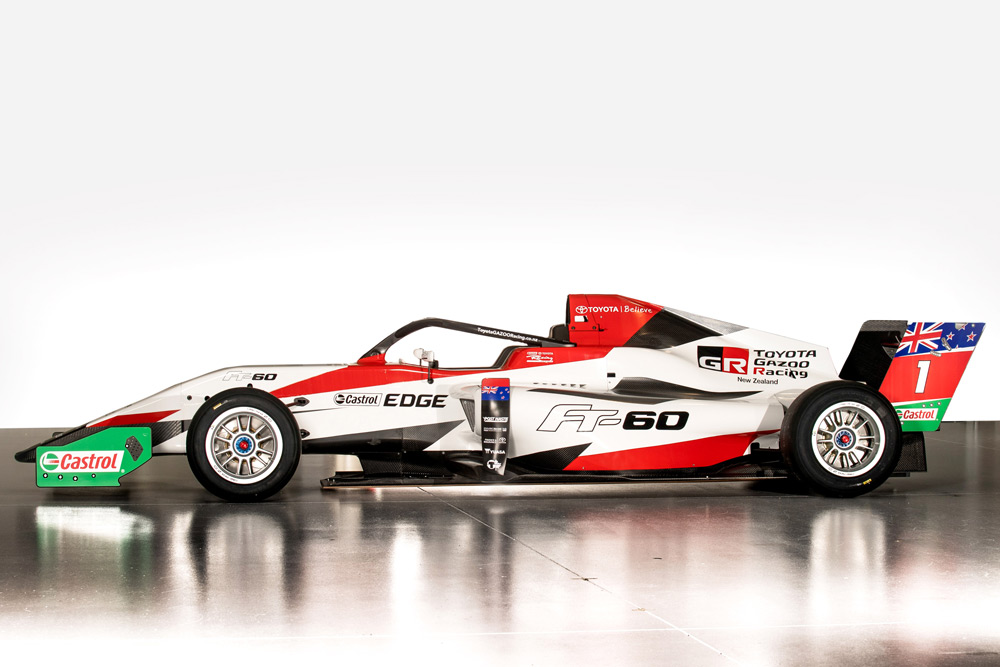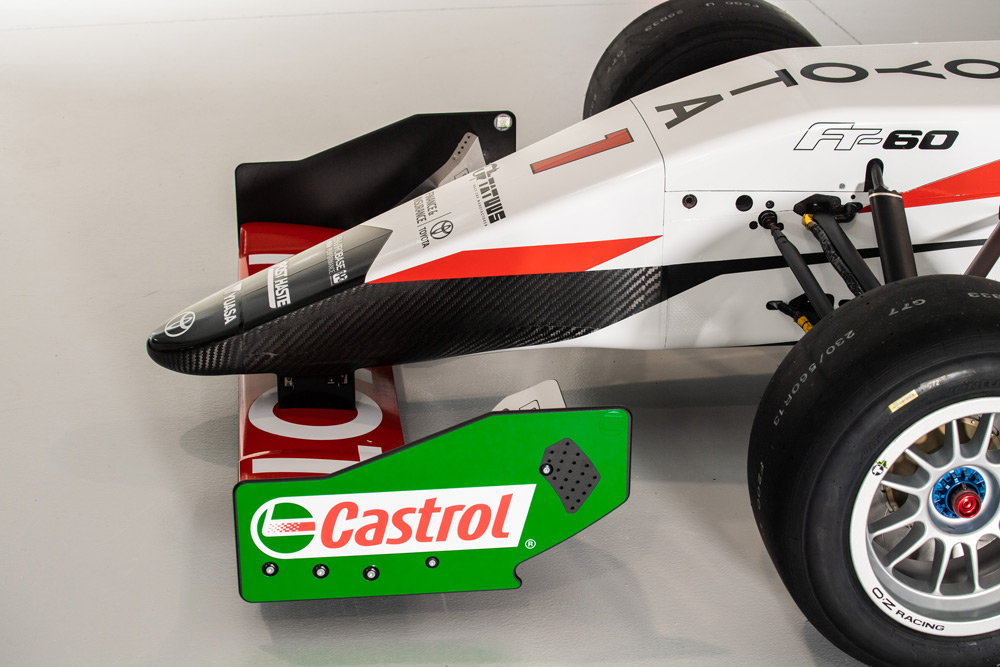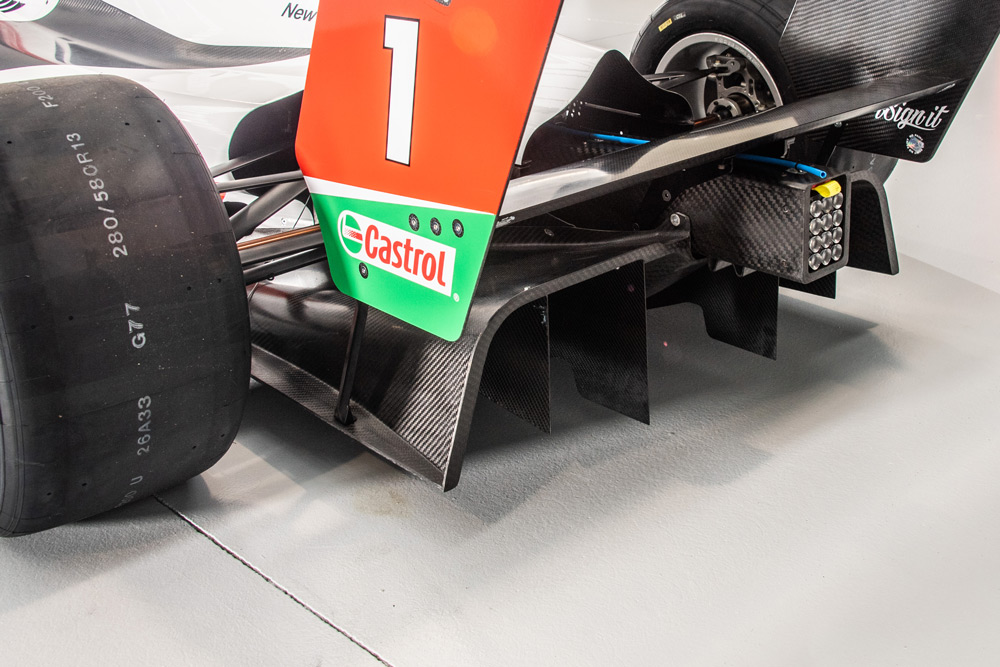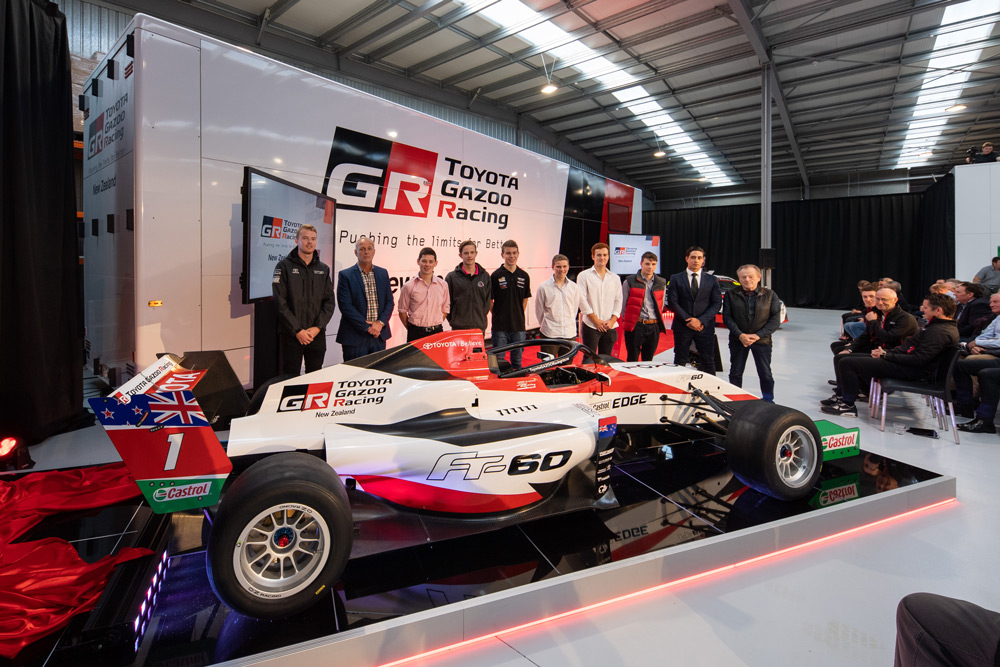Toyota played its cards close to its chest going into the launch of the new FT60 single-seater, successor after five years to the FT50 and the first dedicated effort to create a transition that works between the much less powerful FIA Formula 4 and the new GP3-inspired FIA Formula 3. But if this were poker, that hand would be a Royal Flush, ace high.
It’s been a time of sweeping transition in international motorsport. Gerhard Berger’s new global career ladder, which leads rising race stars through a sequence of F4-3-2-1, still has a yawning gap to fill.

It is designed to give drivers emerging from karting a first step into proper wings and slicks racing. That’s F4, interestingly sitting alongside the top karting championships. The F4 cars have small turbo engines producing 170 bhp in a chassis that weighs no less than 570 kg. Similar to the still-born TRS-Lite venture run in NZ some years ago, F4 should hold no fears for emerging stars.
But the next step is a doozy. The cars in FIA F3 have 370 bhp, fully 200 more than the F4 cars. Put another way, F4 is the trike you had as a kid – low tech and no tuning possible; FIA F3 is by comparison is of those sleek but savage Lotus time trials bikes – high tech, eminently tweakable, but brutally unforgiving if you aren’t able to take hold of the thing and deal appropriately with it.

Caught in a mid-life phase for the outgoing FT50 (the original FT40 car lasted ten years), Toyota had to determine how and when to launch a successor, and what specification it should take.
What they have come up with is a local take on the new Formula 3 Regional race cars – as surmised in Talk Motorsport on Monday. This is a new spec that is in search of a decent name. It builds on the success of the ‘old’ F3, introduces the Halo safety device (in steel) and has a power limit of 270 bhp in a chassis with a minimum weight of 670kg. So: meet the FT60, new kid on the block, a sleek and fast beast with a body that echoes the senior categories TRS alumni will move up to.

It turns out now is the hour, and the spec is much as predicted on Monday in Talk Motorsport.
1. Tatuus chassis shared with the likes of the Formula 3 Asia Championship.
2. Halo and other safety features. The global adoption of the Halo safety device means Toyota had to up-spec or be left behind. The Halo is made in steel, so it also means the car’s weight has gone up sharply, by around 98 kg. Further, the FT50’s ‘tub’ could not be modified to take the shock loadings of a Halo in the event of a crash.
3. The new car is longer and wider in the wheelbase and track than the outgoing car. It also has a plethora of secondary safety features that take a further step onward from what the FT50 offered. It would be missing the point of the halo to assume that bringing 2020-level safety to our premier category was a matter of retrofitting a Halo to existing carbonfibre.
4. A big engine. The fantastic run of success for the 2ZZ-GE has come to an end. There is no way you could extract 270-290 bhp safely from that jewel of a 1.8-litre four. A quick hunt through Toyota’s own inventory produced nothing that fit the bill, so the search was on for a replacement unit. In a first for New Zealand and possibly the world, the FT60 will be powered by a Lexus 2.0-litre turbo engine, race-developed right here in New Zealand by Dave Gouk, who has been the championship’s engine man since the FT40 days.
5. New (wide) wheels and (big) tyres. The championship stays with 13 inch OZ Racing rims for now, which means Michelin doesn’t have a suitable tyre to withstand the torque of that engine in a heavy(er) chassis. . In fact the front tyres on the FT60 are the same dimensions as the FT50’s rears to deal with conditions.
Sources tell me the ‘M’ brand could possibly make a return later in the competition programme, but that the local distributor has their hands full supplying bigger (taller) rubber to the burgeoning local endurance scene.
The car wore Hankook slicks at launch, though management were quick to point out that the tyre contract has yet to be finalised.
6. New aero. Not only does the car’s package of wings lift it directly into the ‘now’, it also creates 20-25 per cent more downforce than the FT50. This – without a clever-clever DRS technology – does raise the spectre of reduced overtaking, but that remains to be seen.

Motorsport manager Mark Whitaker says the company is aiming to put the championship firmly on the map as a ‘must do’ for the world’s best up and coming racing drivers. On that basis the move to a Halo car was a no-brainer, and the rest – engine programme, new aero, wheel and tyre package, safety gear – simply had to follow along into this sleek new beastie.
The challenge is now thrown out – can rival categories offer this level of race package in the northern off-season and can they match the price of admission? Time is short, and time will tell.
Comparing drives:
Castrol Toyota Racing Series
Tatuus – Toyota FT50, 1.8-litre n/a, 215 bhp (165 kW)
Tatuus-Toyota FT60, 2.0-litre turbo, 270-300 bhp (201-223 kW)
MRF series
Dallara-Renault F3, 2.0-litre Duratec n/a, 200-210 bhp (150-160 kW)
Asian F3
Tatuus F3 T-318, Alfa 1.8 turbo, 270 bhp (201 kW)
British F3
Tatuus –Cosworth, 2.0 n/a, 230 bhp (171 kW)
Formula Renault
Barazi-Epsilon, 2.0 Renault n/a, 210 bhp (160kW)




Comments